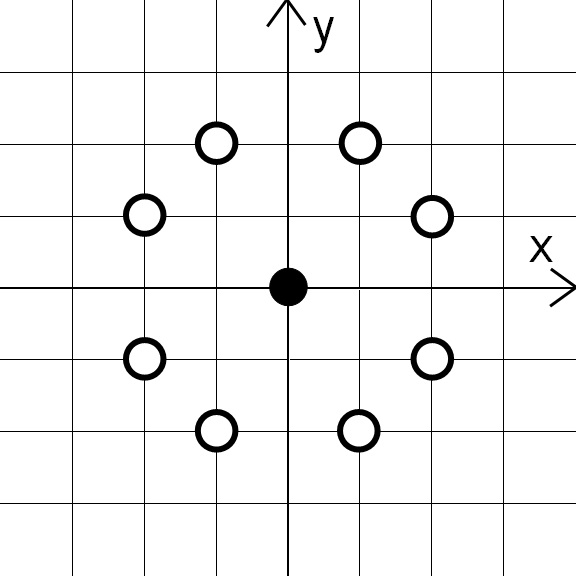9547: ABC239 —— C - Knight Fork
Description
On an $xy$-coordinate plane, is there a lattice point whose distances from two lattice points $(x_1, y_1)$ and $(x_2, y_2)$ are both $\sqrt{5}$?
Notes
A point on an $xy$-coordinate plane whose $x$ and $y$ coordinates are both integers is called a lattice point.
The distance between two points $(a, b)$ and $(c, d)$ is defined to be the Euclidean distance between them, $\sqrt{(a - c)^2 + (b-d)^2}$.
The following figure illustrates an $xy$-plane with a black circle at $(0, 0)$ and white circles at the lattice points whose distances from $(0, 0)$ are $\sqrt{5}$. (The grid shows where either $x$ or $y$ is an integer.)

Input
```
$x_1$ $y_1$ $x_2$ $y_2$
```
Output
Constraints
- $-10^9 \leq y_1 \leq 10^9$
- $-10^9 \leq x_2 \leq 10^9$
- $-10^9 \leq y_2 \leq 10^9$
- $(x_1, y_1) \neq (x_2, y_2)$
- All values in input are integers.
Sample 1 Input
0 0 3 3
Sample 1 Output
Yes
- The distance between points (2,1) and (x1,y1) is $\sqrt{(0−2)^2+(0−1)^2}=5$;
- the distance between points (2,1) and (x2,y2) is $\sqrt{(3−2)^2+(3−1)^2}=5$;
- point (2,1) is a lattice point,
so point (2,1) satisfies the condition. Thus, Yes should be printed.
One can also assert in the same way that (1,2) also satisfies the condition.
Sample 2 Input
0 1 2 3
Sample 2 Output
No
Sample 3 Input
1000000000 1000000000 999999999 999999999
Sample 3 Output
Yes